
How Stephen Gould Scaled Its Capacity by 30% without Making a Single Hire
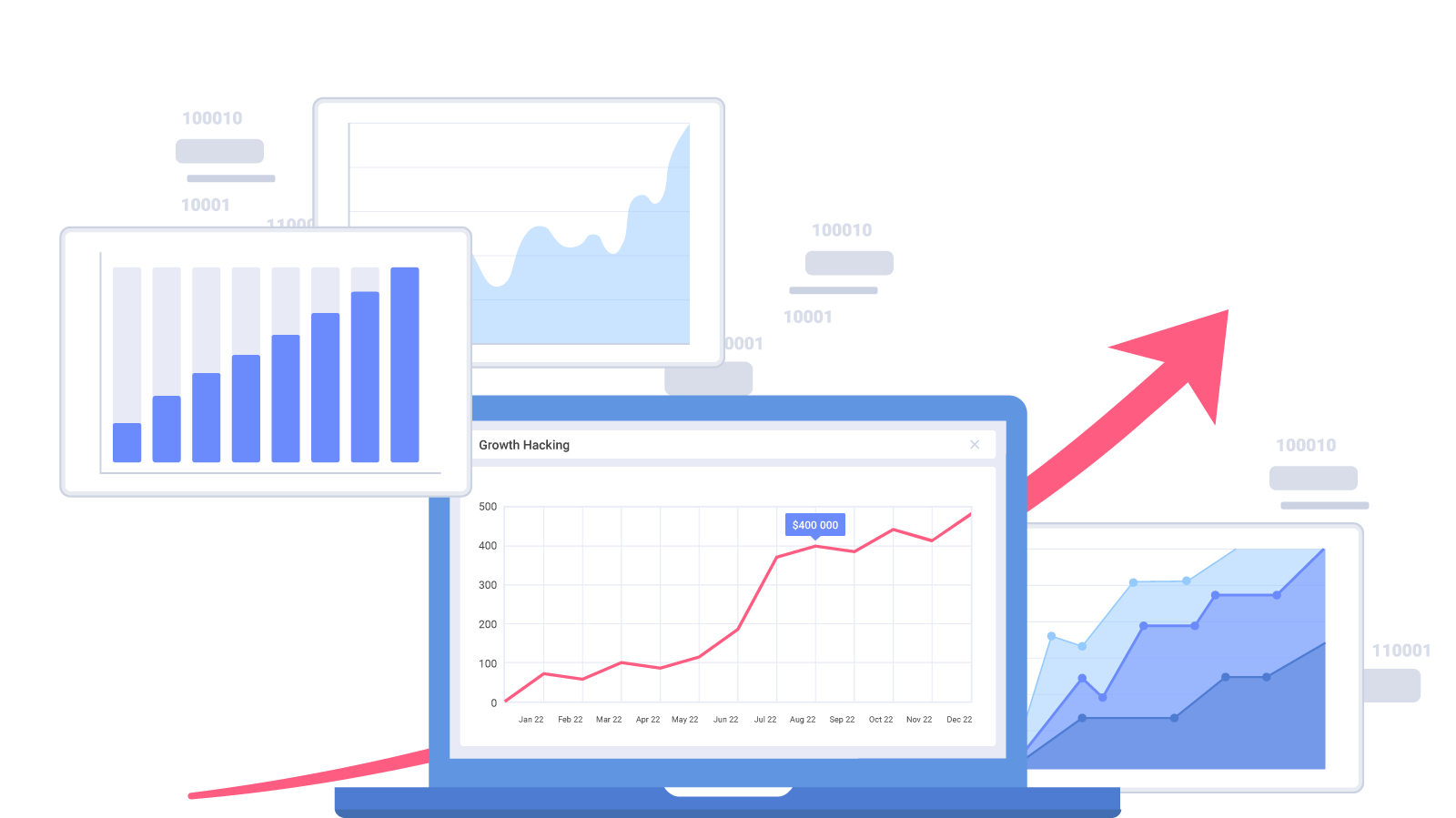
As marketers, consultants, and startups have long ago learned - any company's growth strategy depends hugely on the selected marketing approach. Still, it's like nothing compares to growth hacking - a sort of revolution in growth strategy. Growth hacking brings key people to the table to run smart experimentation, inspired by data-driven insights creating a competitive advantage that cannot be overstated.
In this whitepaper, we will take you on a step-by-step guide to mastering growth hacking to truly expand your company, customers, influence, and revenue.
Growth hacking is a data-driven marketing approach that provides companies with the ability to experiment freely with low-budget tactics, attracting new business and retaining more customers strategically.
Fill out the form to continue reading
Beyond everything, growth hacking helps companies in all fields and of all types to answer the WHYs that determine their performance. Using this method they can truly dig into any individual questions they might have about why something is working well or not, performance or products that are not successful, etc. With growth hacking, experimental ideas from different personas are brought into the equation and your product can be adjusted while it’s still in development.
Growth hacking strategies can be applied to almost everything point and channel in the customer journey. From content marketing to product development, major events, social media, and more. The enablement of growth hacking means tactically choosing where to run experiments that map to critical points in your customer journey. Critical points for different companies may vary since different metrics prove more important at different times or during specific campaigns. However, with growth hacking, you always stay focused on objectives being accomplished quickly and with minimal cost.
The fundamental parts of the growth hacking process are:
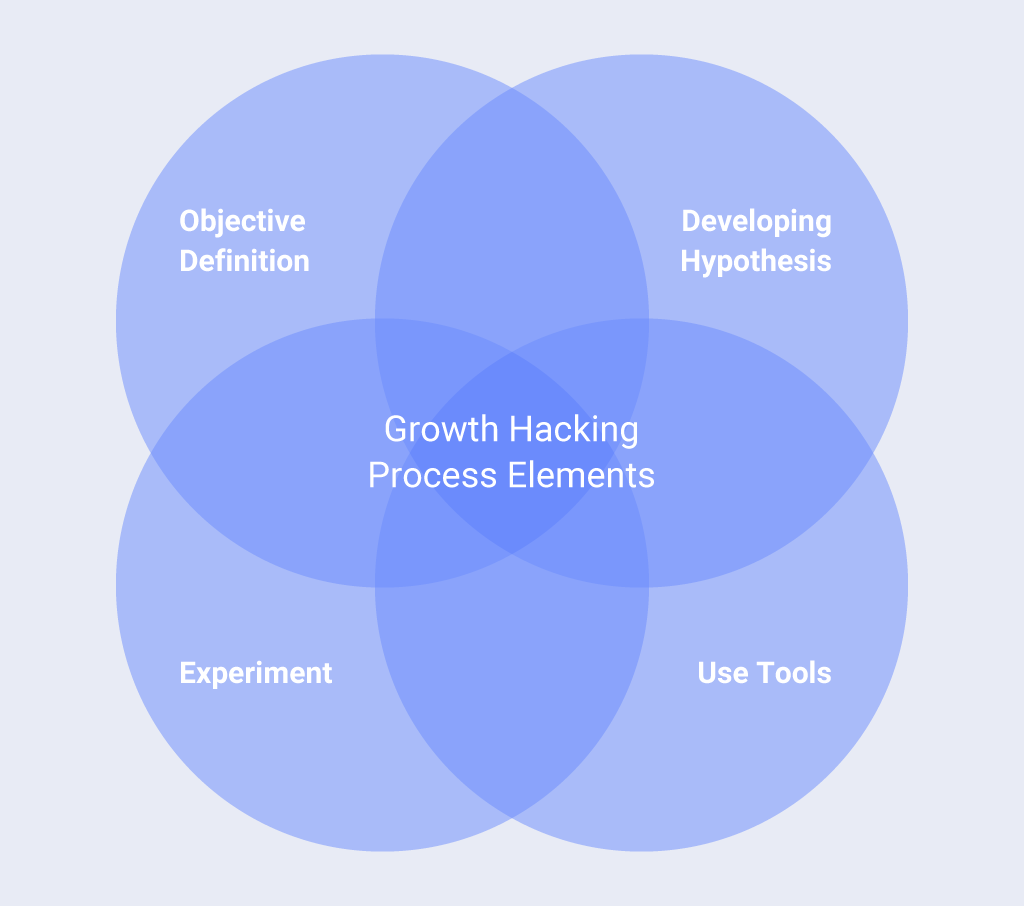
To delve deeper into the importance of growth hacking, let’s first take a look at who benefits most from this method. Growth hacking is most useful for:
The significance of growth hacking is connected strongly to creativity and cost-efficiency in gaining new clients and growing the business. When applied correctly, growth hacking can help with things such as:
Growth hacking is not only revolutionary but a safer solution for companies, since it relies on data analysis before driving decisions forward. A growth hacking strategy can make businesses more scalable and sustainable, with a wider range of possibilities coming from the untraditional ways of action growth hackers choose. The good news is – although some of them might seem unconventional, they are supported with data, and therefore, mistakes are limited and outcomes – better evaluated.
It’s not a secret that growth hacking is born out of the oversaturation of marketing strategies and the high strain of the startup environment, with companies that have limited budgets. Still, even as a novel approach, it is a one that deals with marketing, sales cycles, product development and experience among others. So how can we differentiate traditional marketing from growth hacking? Here are some pointers.
Growth hackers focus mainly on growth factors and it’s their most important metric (it’s in the name, after all). Traditional marketers look more at the big picture and take into account several capacities to bring their budget into.
Growth hacking always comes back to data and analytics. Every action and decision made with this method is based on data analysis and facts informing the direction of the next step. In traditional marketing, even though data is still used in some instances, the focus on data is embedded into the growth hacking process.
Growth hacking looks outside the box much more often than traditional marketing and readily experiments, exploring new potential routes, product testing, or experimenting with strategies. Again, it’s data that brings the confidence to experiment here, so it’s what drives the strong experimenting forward, and much more so than in traditional marketing.
Traditional marketing tends to be and stay expensive, while growth hacking uses resources much more smartly and therefore is more cost-effective. The use of big budgets in traditional marketing is not the course growth hacking takes – the approach here is to get maximum results with minimal cost.
Growth hacking focuses on a smaller segment of customers while traditional marketing usually seeks more extensive audiences and more customers. Traditional marketers operate with larger industries and larger pools to apply their strategies. Growth hacking depends on digital savviness and data more than anything to judge where to put effort and even small audiences are effective in the set goals.
With traditional marketing, there is often a sort of disconnect or separate operating for the team, while growth hacking offers a more holistic approach to teamwork. Cross-department collaboration and very close communication with a lot of sharing in any project or campaign is an essential tactic for growth hackers and a process that sets them apart from traditional marketing.
While traditional marketing is more about attracting new customers, the growth hacking method places more emphasis on customer retention. Meaning, they opt to optimize the customer journey better and keep their customers satisfied and not only concentrate on the next win.
As we said, growth hacking is about experimenting, but it’s not at all a chaotic process. In fact, several phases need to be present for the process of growth hacking to be executed successfully.
Whether you are starting with a product or a service, your company needs to satisfy a market need. Creating the alignment between need and offering by understanding the market, the customers, the needs – is the first phase or step in growth hacking.
For every company trying to achieve growth, finding the north star metric is of utmost importance. It’s the number that represents the main goal of the entire organization, bringing focus on long-term growth and is within your control, measurable and of course, time-bound. This number, whether it’s “downloads per month” or something else, also reflects the bond of your company with its customers.
This is the phase you need to make sure you invest in the right direction by identifying your levers, or what metrics of the growth hacking funnel to take into account at this point (acquisition, activation, retention, referral, and revenue = AARRR).
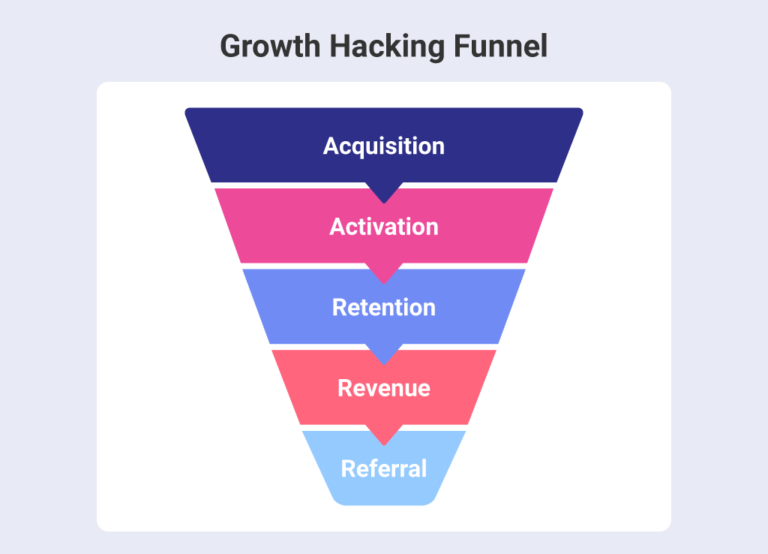
Once you kick off your growth hacking cycle, you must keep the loop of the process going forward and make sure you apply it to all of the areas of business where you need to experiment, get results, analyze and determine success.
Growth hacking is a continuous process that demands improvements along the way and the best way to optimize and adjust it is through data and close collaboration of your team.
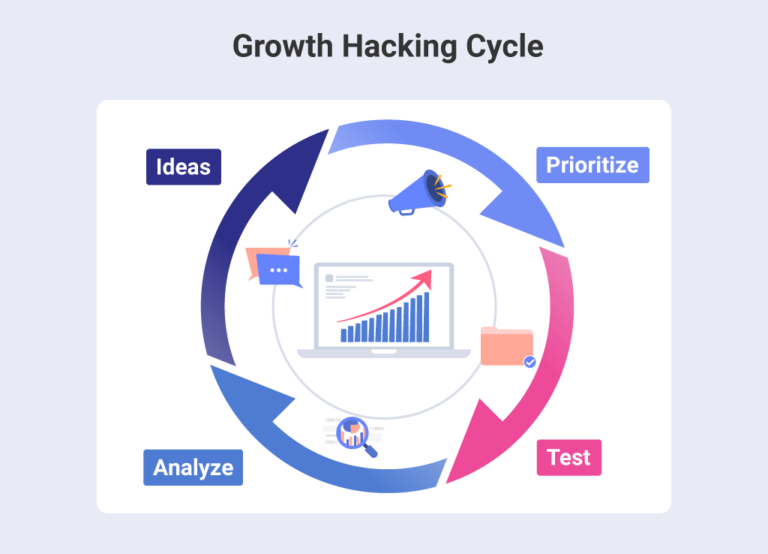
Besides cost-effectiveness, growth hacking brings a lot of other important benefits to organizations adopting it. Here are some of the most important ones.
With growth hacking, you can measurably improve your product design and experience, by relying on data analytics and bringing the approach of customer analysis, acting and reacting according to facts, analyzing competition and potential risks, etc.
With growth hacking, it’s much easier to achieve, build and maintain brand identity and reputation. That happens by identifying your ideal customer’s pain points early on and getting one step ahead of your competitors, by data analysis, and then, of course, solving these problems.
One of the best things about growth hacking as a method is that it uses data-driven strategies that can suit any goal and objective – be it a campaign, a project, ROI improvement, product development, etc.
In an eternally dynamic world, finding new loopholes in strategy as well as discovering new business models is essential to staying ahead of the competition. With growth hacking and usage of data, this is something your organization can depend on.
Growth hacking brings better-customized messages and campaigns through getting a better understanding of your customers and tailoring specific features and approaches that resonate with them.
If you want to achieve good growth hacking strategy that works, you will need to solidify clear processes and follow them on every step. Here are the 7 best practices to accomplish this.
The people your growth hacking team consists of tech-savvy people with a data-driven mindset. Here are the roles that your growth-hacking team cannot do without:
and track everything you do while it’s still in progress, to review how the performance goes and adjust simultaneously if needed.
To keep up with everything, the current trends, competitors’ choices, and every new potential opportunity, you need to listen to the market. The best way to do so is through your customers, building a social media community, creating events for your brand, and creating valuable partnerships.
A big part of growth hacking is referral marketing or turning your customers into brand ambassadors. This type of marketing promotes word-of-mouth distribution of knowledge for your brand (PayPal was a pioneer in this) and by this, reduces customer acquisition costs while boosting the company’s growth at the same time.
A leading strategy, when it comes to growth hacking, content marketing helps with rapid growth and boost of traffic. That means optimizing SEO for your blogs, filling them with good content, and increasing your content views by promoting it strategically.
Since growth hacking depends on experimentation, testing is of utmost importance here – email messages, A/B tests of any material that defines your product, etc. The only requirement is that future decisions must be based on data.
Let’s take a look at some of the examples of growth hacks made by companies that have been thriving with their results thanks to it.
We already mentioned PayPal as one of the companies whose success is tied to growth hacking. Their legendary use of their referral program catapulted their user base to over 100 million and they experiences up to 10% daily growth. The strategy to give $10 to each referring user and $10 to each user they gain brought forth their booming triumph.
If you are wondering who the first free email provider was – it was Hotmail. Their “P.S. I love you” trick, having the phrase automatically placed at the bottom of users’ emails together with a link to their website led to a booming surge of new users.
Dropbox grew from 100 000 to around 4 million users thanks to a growth hack with a referral program strategy. They offered users 250 MB of extra storage to invite other users in through social media or with automatic email invites.
With their cross-posting listings on Craigslist, Airbnb managed to raise $100 million at a $1 billion valuation over a weekend. The strategy included sending automated mailings to people who placed rental listings on Craigslist.
The growth hacking examples here show that any potential of a product becomes greater when a strategy of sharing and social interaction is involved, as well as experimenting beyond traditional marketing methods.
Technology is what makes growth hacking possible and you need to choose them according to your strategy, as well as their dependability. Still, there are some truly great ones to choose from depending on your goal – and what experiments you wish to execute – so we’ve created a wide selection for you below.
Having the option to automate your marketing activities is one of the most important growth hacker skills that bring better results. Tools like Hootsuite, to automate your social media marketing (integrated with over 35 platforms) or Traffic Booster, allowing you to automate your Google AdWords campaigns, can save time and allow you to execute your vision faster and with minimal effort.
One of the proven growth hacking tools for entrepreneurs is email marketing tools – they let you reach a mass of potential new customers and current customers and explore different approaches in your mailings. Among the best email marketing tools, today are MailChimp, MailGenius, GetResponse, and HubSpot.
Split or A/B testing is an important part of a growth hacking mindset. You can create the best optimization when testing different versions of content, product promotion, etc. Hotjar , Statisig, and CrazyEgg are good options to use here.
Prototyping in growth hacking is a great way to test concepts and to make sure your company’s products are developed smartly as far as the customer’s needs go, and see if the design is more effective “in the real world”. А great tool for prototyping is Indigo.Design, appropriate for prototyping in the MVP stage and getting built-in UI packs, design libraries, user testing, app building, and code generation.
These are very useful for marketers who don’t code but still need to keep a technical mindset and an understanding of technology, to execute their vision of a product, service, website, etc. The good news is, there are low-code development tools like App Builder – a cloud-based WYSIWYG drag & drop tool that helps, for example, to start your app with pre-built design templates, and kick start your digital product.
When running campaigns and always seeking the right approach in your growth hacking method, you need to stay on top of your data. Analytics tools like Google Analytics, Facebook Analytics, Google Ads, and cloud CRM systems can help you keep an eye on the important metrics for your company.
Slingshot is an all-in-one digital workspace and a cost-effective solution that can drive your growth hacking forward. It brings forward the power of team collaboration, data analytics, data visualizations, task tracking, and discussions in context, to help you with your growth goals. Here’s what Slingshot can offer:
As a business intelligence tool, Slingshot provides you with dashboards, and analytics can quickly connect you to your different data sources and create dashboards within minutes. With dashboards, you can follow your customer data and answer any questions about them you might have through analysis.
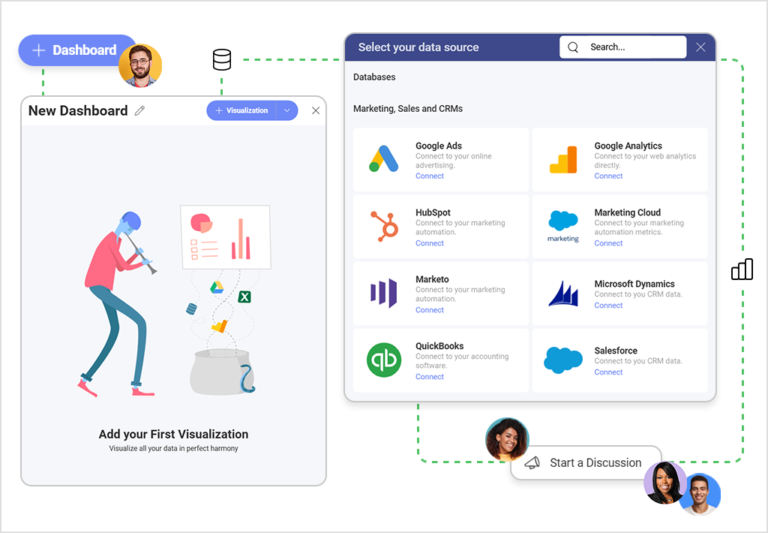
Slingshot is a project management software that provides a great way to plan and track projects from beginning to end but also lets your team collaborate on hypotheses for your growth hacking experiments. Discussions and chat in Slingshot happen in context, so everyone is aware of any new idea, blocker, or feedback in specific projects and workspaces.

Slingshot unites all your content in one place, so everyone in your startup can collaborate efficiently across all time zones and always have access to the most updated files. It’s the only online hub your team needs for bringing all their needed content together – from any cloud storage like Google Drive, OneDrive, Sharepoint, Box, DropBox (see the whole list here).
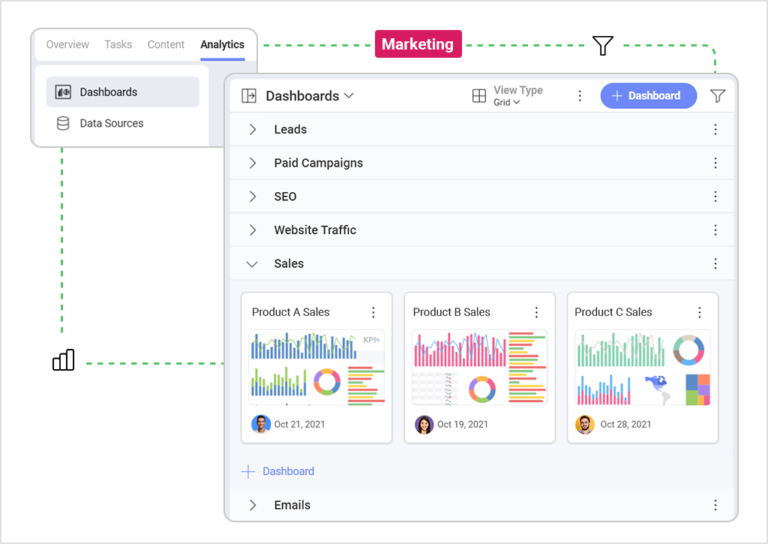
In Slingshot, you can simplify your user testing process and unite it with the development process by mapping out a clear process, pin the results you get, and turn insights into action in seconds. Tasks in Slingshot are also a great way to track running experiments and follow their progress, blockers, and completion, organized with due dates, assigned responsibilities, and transparency.
See how Slingshot can help you and your teams do more of their best work.